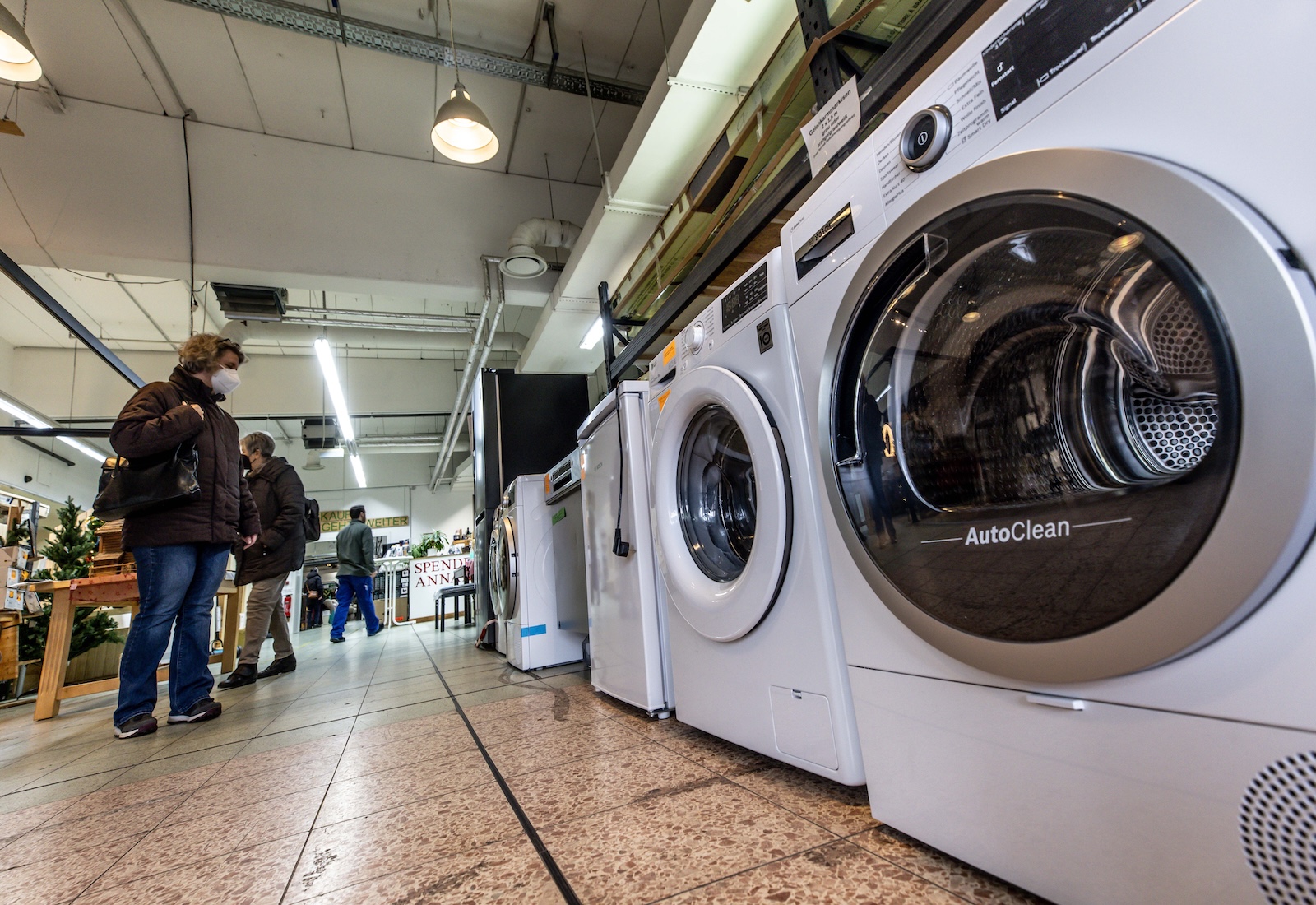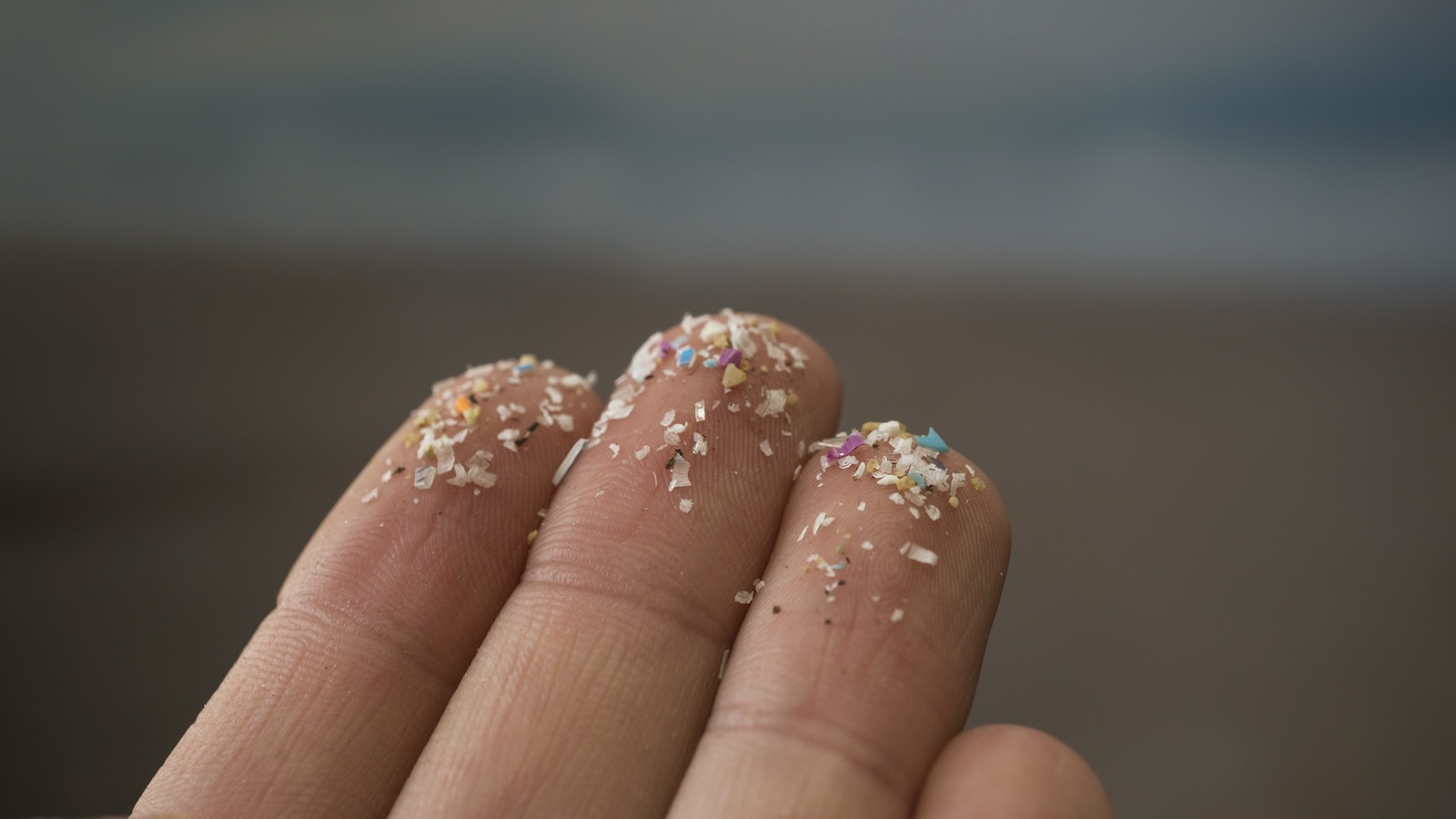Twenty years ago, a team of U.K. scientists sounded the alarm on a then-underappreciated problem: the breakdown of plastic litter into small, even microscopic, fragments. While many previous reports had documented the buildup of plastic bottles and bags in the natural environment, much less attention had been paid to what the scientists dubbed “microplastics.”
Due to “the rapid increase in plastic production, the longevity of plastic, and the disposable nature of plastic items,” the researchers concluded that there was “considerable potential” for microplastic pollution to become a major problem for the environment and human health.
It turns out, they were right.
Over the past two decades, the rate of plastic production has roughly doubled, to more than 400 million metric tons per year, about the weight of 1,200 Empire State Buildings. In the same time period, microplastics — defined as particles with a diameter less than 5 micrometers, about the width of a human hair — have exploded into the public consciousness, riding on a wave of research into the particles’ prevalence across ecosystems and in humans’ bodies. Since that 2004 paper, one of the first to use the term “microplastics,” microscopic plastic fragments have been found everywhere from deep sea sediments to the top of Mount Everest, as well as in human blood, breast milk, colons, kidneys, livers, lungs, placentas, and other body parts.
Many of these findings are synthesized in a review paper published this week in the journal Science. The paper considers what we’ve learned from thousands of research articles about microplastics — including where they come from, where they end up, and how they affect organisms — and appraises regulatory options for dealing with the problem.
Research on the topic has “kind of taken off,” said Richard Thompson, a professor of marine biology at the University of Plymouth in the U.K. who was lead author on the paper from 20 years ago and the new one published on Thursday. “It’s now pretty clear that this stuff is everywhere,” he added, and that unless something changes, humanity will eventually reach a point of “wide-scale” and “irreversible” harm to the environment.
One thing that has become much clearer since the early 2000s is the sheer extent of microplastic pollution. While Thompson’s 2004 paper documented small fragments of acrylic, nylon, and polyester in coastal environments around the U.K., further investigation has shown that contamination is global. By now, microplastics have been found in virtually every ecosystem researchers have looked, including in soils, lakes, and rivers, and on remote mountains. One alarming study from 2020 found that microplastics are present in rainwater, while others have shown that the particles are ubiquitous in the indoor air we breathe. Earlier this year, the environmental consulting firm Earth Action estimated that nearly 13 million metric tons of microplastic enter the oceans and terrestrial environment annually.

Nasir Kachroo / NurPhoto via Getty Images
Where did all these microplastics come from? Early on, scientists intuited that they were generated by larger pieces of plastic debris breaking down — and this is indeed the most significant source of microplastics. But many more have been identified. Paint, for example, contains plastic polymers and may contribute as much as 1.9 million metric tons of microplastics to the marine environment annually. Some of the other most significant sources of microplastics include rubber tires, which shed microplastics as they rub against the road, and synthetic textiles, which release microfibers when worn and washed. An unknown amount of microplastic pollution comes from plastic-derived fishing nets and gear, which make up a huge fraction of plastic in the ocean more broadly.
One reason scientists have found microplastics so far and wide is because there are more of them looking than ever before. But those scientists also have better technologies at their disposal. A kind of imaging called pyrolysis-gas chromatography-mass spectroscopy, for instance, has recently made it easier for researchers to identify small, dark microplastics released by the erosion of rubber tires. Other methods have made it possible to more precisely count the number of microplastics in a given sample, and to sort them by size and polymer — all of which can yield clues about their toxicity.
More researchers and better technology have also led to the detection of microplastics in living organisms. Over the past 20 years, scientists have documented microplastics in more than 1,300 aquatic and terrestrial species, and throughout the human body. Eye-catching headlines over the past few months have highlighted the particles’ presence in human testicles and penises, and this February, scientists at the University of New Mexico found microplastics in every placenta out of 62 that they tested. Scientists still don’t have a complete picture of how exactly this contamination is affecting human health, but lab studies have linked microplastics to cell inflammation and the spread of cancer. Some epidemiological evidence suggests they may be a risk factor for heart disease.

These findings help explain why microplastics have risen so quickly to the top of many average people’s priority lists. In Germany, for example, consumers in a 2023 survey said they were more concerned about microplastics in food than any other health topic, including antibiotic resistance and pesticides residues on food. Another recent survey showed that more than 90 percent of U.S. voters are also “somewhat” or “very” concerned about microplastics in the human body. Many jurisdictions are seeking to hold plastic makers responsible for the pollution they’ve caused, and at least two lawsuits against the plastics industry — one brought by the New York attorney general’s office and the other brought by the City of Baltimore — specifically call out the proliferation and health risks of microplastics.
Industry groups acknowledge that humans are being exposed to microplastics, but deny that there is any evidence that they may harm human health or the environment. On its website, the Plastics Industry Association says the industry “supports more and better research on microplastics” and highlights its investments in pollution prevention and recycling infrastructure. “Everyone agrees on one thing,” the trade group says: “Plastics, large or small, don’t belong in our waterways.”
On that narrow point, Thompson agrees. He thinks there’s already enough evidence of microplastics’ harms that scientists should concentrate on ways to stop microplastics from entering the environment in the first place. Several interventions have already been taken — a 2020 French law, for example, now requires new washing machines to come with microfiber filters, and the European Union is phasing glitter and other microplastics out of products like shampoo and lotion. But Thompson’s paper highlights the need for multidisciplinary approaches that take into account insights from a variety of fields, including economics and behavioral science. Initiatives to replace single-use plastics with reusable alternatives, for example, could play a major role in reducing the generation of microplastics — but they’ll only work if they’re inexpensive and convenient enough for consumers to accept them.
“To get something to work, it’s not just about a chemistry experiment in a lab,” Thompson said. “It’s going to take changes in social norms, the economy, society, legal frameworks.”
At the broadest level, Thompson, other scientists, and environmental advocates are supportive of measures to limit overall plastic production and ban the most problematic categories of plastic, both of which would indirectly reduce the generation of microplastics. These solutions are currently being discussed as part of a high-profile United Nations treaty to end plastic pollution. Jen Fela, vice president of programs and communications for the nonprofit Plastic Pollution Coalition, described the treaty as “the best chance we have” to address the plastic pollution crisis.
“Solutions exist,” she told Grist. “The only way to stop plastic pollution is to significantly reduce plastic production.” The fifth and final round of negotiations over the treaty is scheduled to take place this November and December in Busan, South Korea.




